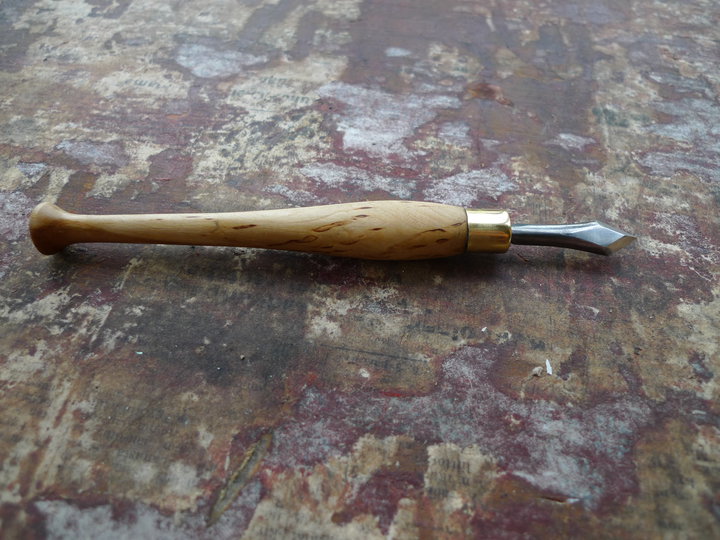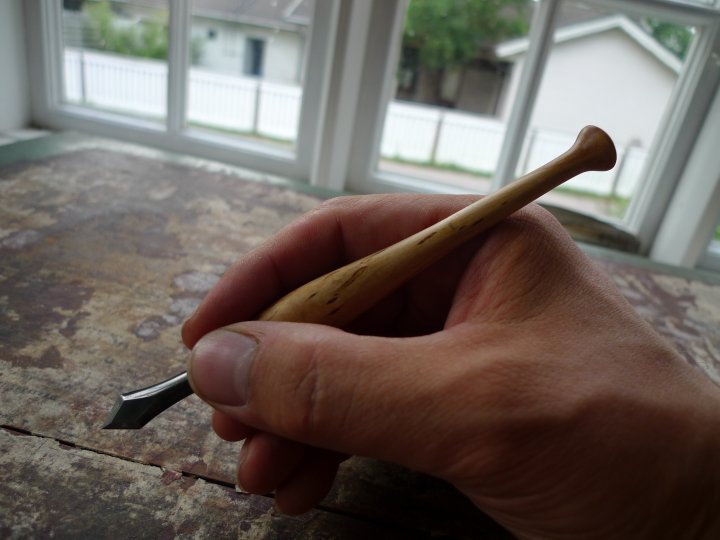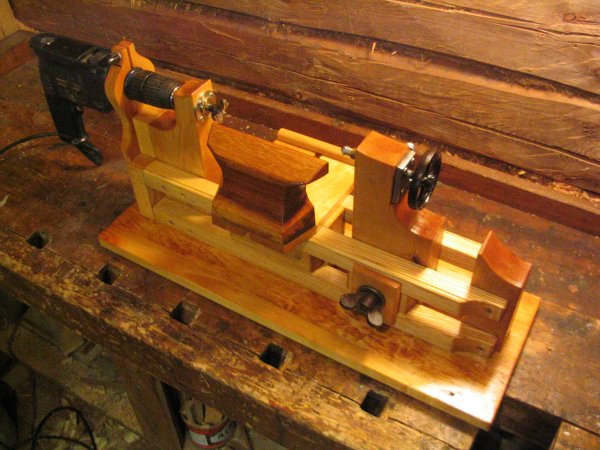Pekka Huhta
Established Member
I have been struggling for years with different utility knifes, snap-off blades and a thick heavy marking knife which is funnily stamped "Foreign". And yesterday I decided to build my own.
First thing that I wanted was a good and sturdy blade, and still narrow and light enough to fit inside dovetails. I started with a strip cut off from a 2,5 mm thick circular saw blade. After some filing and grinding it is 1,2-1,6 mm thick, enough to keep the blade rigid when marking.
I have always loved fountain pens and use them a lot, so it's not so surprising that the blade resembles a fountain pen nib. Form may follow function, but I thought the few extra hours spent shaping the blade made the blade a bit more then just functional. I think it's quite pretty. :wink:
Another thing which does not show from the photos is that the whole marking knife and the brass ferrule are oval, not round. This way it sort of falls in the right way to your hand with the blade oriented just the right way. And of course an oval knife does not roll around the workbench.
A third "feature" if it can be counted as such is the size of the knife. I can't imagine what could be done with a 9" marking knife: if you are building anything so big that needs such a dagger for marking, the marking tolerances could just as well be handled with a pen. So the knife is almost exactly 6" long and can be used like a pencil, not like a knife.
As you can see, the handle resembles a lot the marking knifes of Derek Cohen. I have always liked the streamlined form of Derek's knifes, so the knife can hopefully be considered as a form of flattery. I'm not sure how much I have improved the model, merely modified it to suit my needs better.


The handle is Karelian Birch, finished with linseed oil, two coats of shellac and home brewn wax containing beeswax, linseed oil, pine tar and turpentine.
Pekka
First thing that I wanted was a good and sturdy blade, and still narrow and light enough to fit inside dovetails. I started with a strip cut off from a 2,5 mm thick circular saw blade. After some filing and grinding it is 1,2-1,6 mm thick, enough to keep the blade rigid when marking.
I have always loved fountain pens and use them a lot, so it's not so surprising that the blade resembles a fountain pen nib. Form may follow function, but I thought the few extra hours spent shaping the blade made the blade a bit more then just functional. I think it's quite pretty. :wink:
Another thing which does not show from the photos is that the whole marking knife and the brass ferrule are oval, not round. This way it sort of falls in the right way to your hand with the blade oriented just the right way. And of course an oval knife does not roll around the workbench.
A third "feature" if it can be counted as such is the size of the knife. I can't imagine what could be done with a 9" marking knife: if you are building anything so big that needs such a dagger for marking, the marking tolerances could just as well be handled with a pen. So the knife is almost exactly 6" long and can be used like a pencil, not like a knife.
As you can see, the handle resembles a lot the marking knifes of Derek Cohen. I have always liked the streamlined form of Derek's knifes, so the knife can hopefully be considered as a form of flattery. I'm not sure how much I have improved the model, merely modified it to suit my needs better.


The handle is Karelian Birch, finished with linseed oil, two coats of shellac and home brewn wax containing beeswax, linseed oil, pine tar and turpentine.
Pekka





